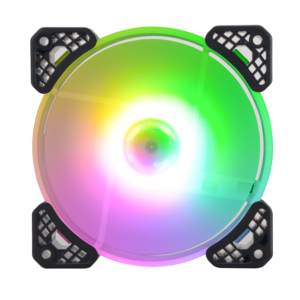(228091 products available)

































































































































































































Various types of PC parts are available to assemble a personalized computer system. These include peripherals, fundamental components, upgrades, and replacements. Each part plays a unique role in determining a PC's functionality and performance.
The primary function of PC parts is to work together to make a computer perform tasks. Each component comes with features that help it execute its function in the overall system. Here are some common features and functions of PC parts.
Motherboard
The motherboard features different slots and connectors. Each part serves a specific purpose. For example, the DIMM slots are for memory expansion. Memory modules go here when users want to increase the total RAM. The expansion slots also enable users to add more capabilities to the PC. They can install cards for audio, video, and internet connectivity, among other functions.
Processor
The processor is like the brain of the computer. It executes instructions, processes data, and controls all the operations behind the scenes. Thus, a powerful chip will deliver speed and efficiency. An inferior model will determine how fast the PC performs tasks. Its features will influence its performance. For example, the number of cores and frequencies determine how well it can multi-task and execute complex operations.
PC Memory
RAM can be likened to a temporary table where the processor puts data for instant access. A PC with a higher RAM capacity can hold more data, applications, and tasks. Thus, users can multi-task and enjoy smooth and responsive computing. There are two main types of RAM. DIMMs go into desktop motherboards, while SO-DIMMs are for laptops and compact computers.
Storage
A hard drive or SSD stores everything about a computer system. It saves the operating system, software applications, files, and user data. The features of these storage devices determine their performance and capacity. For example, users can find hard drives with storage capacities ranging from a few hundred MB to several TB. The average SSD tends to have a storage capacity of between 120 MB to 4TB.
Power Supply Unit (PSU)
PSU is an abbreviation for Power Supply Unit. It enables the PC to work with power from the wall socket and convert the energy into a safe voltage for the computer's parts. It also features different connectors to show it can work with various PC parts. On top of that, it comes with a fan that helps it stay cool while operating.
PC parts have a wide array of applications spanning different industries. The following list outlines typical use cases for computer hardware:
These are some crucial things to consider before buying PC parts:
Compatibility:
The most important factor is whether all the pieces of the computer can work together. Check that the CPU, motherboard, RAM, and GPU match in terms of connection types. For example, make sure the motherboard has the right socket for the CPU. Also, confirm that everything fits inside the computer case. Look at sizes like ATX or Micro ATX for motherboards and PC cases.
Buyer Needs:
Have specific tasks planned for the PC. Consider the software, games, or workloads that will be used. Different parts provide varying performance levels. Select parts that suit the intended use, whether gaming PC, content creation, or business tasks.
Budget:
Apart from being a specific PC part price, setting a budget is important when buying PC parts. Determine how much one is willing to spend overall and for each component. PC parts come at different prices, from low to high. So, decide if the buyer needs more affordable value parts or are ready to invest in higher-end options.
Quality and Reviews:
Look for trusted brands known for quality PC computer parts. Read reviews from other buyers to see if parts perform well and last a long time. Stated parts can be selected based on rated by previous purchasers.
Future Upgrades:
Consider future needs and whether the PC will need to be upgraded later. Choose parts that allow easy upgrading, such as adding more RAM or storing space in the future without getting new whole sets.
Warranty and Support:
Look at the warranty offered to protect buyers in case of any issues, along with options for getting help if something doesn't work as expected. Make sure the seller has good customer support that can be contacted for more information if parts don't function properly.
Q1: What computer parts sell the most?
A1: The most commonly sold PC parts are cases, as they are universal and can be used to build any PC. After that, the most sold PC parts are RAM, motherboards, GPUs, CPUs, SSDs, and power supplies.
Q2: How do I find PC part suppliers?
A2: To find a PC parts supplier, search for specific suppliers on Chovm.com. Or, browse through different categories where computer parts are located, and then filter the suppliers to see which are verified.
Q3: How to source computer parts?
A3: To source computer parts, make sure to read each supplier's reviews and ratings. Select a supplier that has the majority of its reviews and ratings are positive. Then, contact the supplier to verify the product quality and to scan to see if they are willing to help ship the parts.
Q4: What PC parts should a beginner build?
A4: For beginners, the PC parts that should be used are the ones that are easier to assemble and reportedly have an easier learning curve. These parts include the motherboard, CPU, GPU, RAM, storage, power supply, and case.